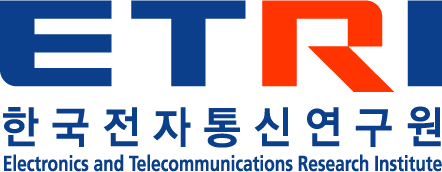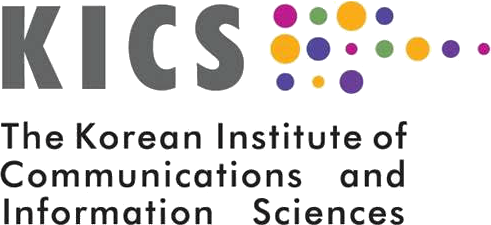Monday Morning Session, 25 May, 09:00 – 12:15
TUT01 - Federated Learning at the Network Edge: Fundamentals, Key Technologies, and Future Trends
TUT03 - Machine Learning for Future Wireless Networks
TUT05 - Moving Towards Zero-Touch Automation, A Key Enabler for 6G: The Challenges & Opportunities
TUT06 - B5G: A New Frontier for Non-Orthogonal Multiple Access
Monday Afternoon Session, 25 May, 14:00 – 17:15
TUT04 - Wireless Transmission for Advanced Internet of Things: A Unifying Data-Oriented Approach
TUT07 - UAV Communications in 5G and Beyond: Integration of Sensing, Control, and Learning
TUT08 - Orthogonal Time Frequency Space (OTFS) Modulation and Applications
TUT09 - URLLC for 5G and Beyond: Physical, MAC and Network Design and Solutions
TUT10- NOMA-Based Random Access for Massive MTC in 5G
TUT01 - Federated Learning at the Network Edge: Fundamentals, Key Technologies, and Future Trends
Room: 317C
Presenters: Howard Yang (Singapore University of Technology and Design, Singapore), Zhongyuan Zhao (Beijing University of Posts and Telecommunications, China), Tony Q. S. Quek (Singapore University of Technology and Design, Singapore)
Abstract: The burgeoning advances from machine learning and wireless technologies are forging a new paradigm for future networks, which are expected to possess higher degrees of intelligence via the inference from vast data set and being able to respond to local events in a prompt manner. Due to the sheer volume of data generated by the end devices, as well as the increasing concerns about sharing private information, a new branch of machine learning model, namely the federated learning, has emerged from the intersection of artificial intelligence and edge computing. In contrast to the conventional machine learning methods, federated learning brings the models directly to the device for training, where only the resultant parameters shall be sent to the edge servers. The local copies of the model on the devices bring along great advantages of eliminating the network latency and preserving data privacy. Nevertheless, to make federated learning possible, one needs to tackle new challenges that require a fundamental departure from the standard methods designed for distributed optimizations. In this tutorial, we deliver a comprehensive introduction of the federated learning. Specifically, we first survey the basis of federated learning, including its distinct features from conventional machine learning models, the fundamental theories that ensure the successful operation of federated learning, and the algorithms to avail an effective adoption. We then enumerate several critical issues associated with the deployment of federated learning in a wireless network, and show how technologies from different perspectives, ranging from algorithmic design, on-device training, to communication resource management, shall be jointly integrated to facilitate the full implementation. Finally, we conclude by shedding light on future works.
Biography
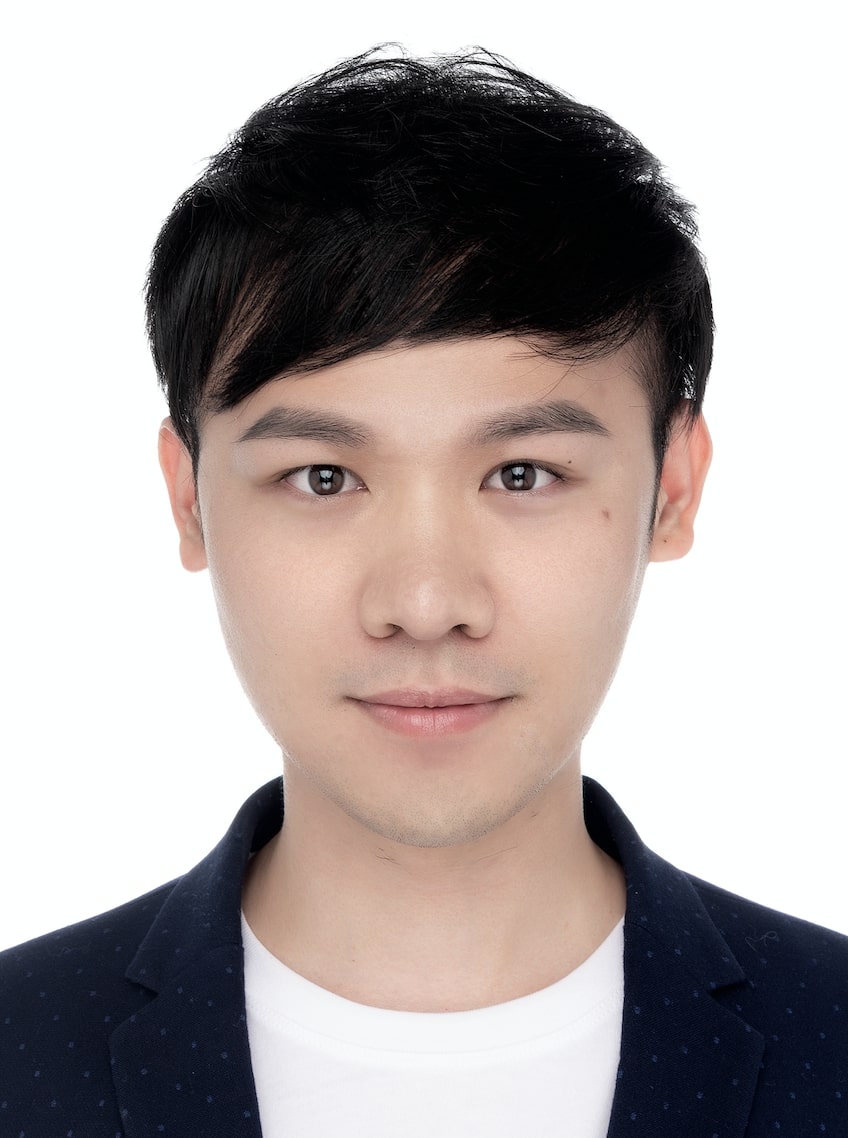
Howard H. Yang (S’13–M’17) received the B.Sc. degree in Communication Engineering from Harbin Institute of Technology (HIT), China, in 2012, and the M.Sc. degree in Electronic Engineering from Hong Kong University of Science and Technology (HKUST), Hong Kong, in 2013. He earned the Ph.D. degree in Electronic Engineering from Singapore University of Technology and Design (SUTD), Singapore, in 2017. From Aug. 2015 to Mar. 2016, he was a visiting student in the WNCG under supervisor of Prof. Jeffrey G. Andrews at the University of Texas at Austin.
Dr. Yang is now a Postdoctoral Research Fellow with Singapore University of Technology and Design in the Wireless Networks and Decision Systems (WNDS) group led by Prof. Tony Q. S. Quek. He has held a visiting research appointment at Princeton University from September 2018 to April 2019. His research interests cover various aspects of wireless communications, networking, and signal processing, currently focusing on the modeling of modern wireless networks, high dimensional statistics, graph signal processing, and machine learning. He received the IEEE WCSP Best Paper Award in 2014 and the IEEE WCSP 10-Year Anniversary Excellent Paper Award in 2019.
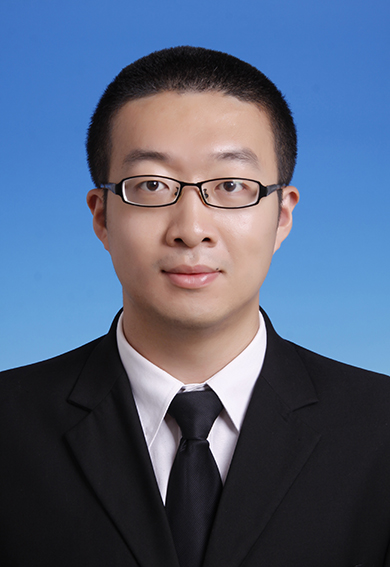
Zhongyuan Zhao (M’14) received the B.S. degree in applied mathematics and the Ph.D. degree in communication and information systems from Beijing University of Posts and Telecommunications (BUPT), Beijing, China, in 2009 and 2014, respectively. He is currently an associate professor with BUPT. His research interests include fog computing/edge computing, content caching, and edge intelligence in wireless networks. Dr. Zhao serves as an editor of IEEE COMMUNICATIONS LETTERS (since 2016), and received Exemplary Editors Award twice (2017 and 2018). He was also a guest editor of IEEE ACCESS. He was the recipient of the Best Paper Awards at the IEEE CIT 2014 and WASA 2015.
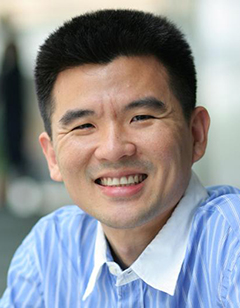 Tony Q. S. Quek (S'98-M'08-SM'12-F'18) received the B.E. and M.E. degrees in electrical and electronics engineering from the Tokyo Institute of Technology, Tokyo, Japan, in 1998 and 2000, respectively, and the Ph.D. degree in electrical engineering and computer science from the Massachusetts Institute of Technology, Cambridge, MA, USA, in 2008. Currently, he is the Cheng Tsang Man Chair Professor with Singapore University of Technology and Design (SUTD). He also serves as the Acting Head of ISTD Pillar, Sector Lead of the SUTD AI Program, and the Deputy Director of the SUTD-ZJU IDEA. His current research topics include wireless communications and networking, network intelligence, internet-of-things, URLLC, and big data processing.
Tony Q. S. Quek (S'98-M'08-SM'12-F'18) received the B.E. and M.E. degrees in electrical and electronics engineering from the Tokyo Institute of Technology, Tokyo, Japan, in 1998 and 2000, respectively, and the Ph.D. degree in electrical engineering and computer science from the Massachusetts Institute of Technology, Cambridge, MA, USA, in 2008. Currently, he is the Cheng Tsang Man Chair Professor with Singapore University of Technology and Design (SUTD). He also serves as the Acting Head of ISTD Pillar, Sector Lead of the SUTD AI Program, and the Deputy Director of the SUTD-ZJU IDEA. His current research topics include wireless communications and networking, network intelligence, internet-of-things, URLLC, and big data processing.
Dr. Quek has been actively involved in organizing and chairing sessions, and has served as a member of the Technical Program Committee as well as symposium chairs in a number of international conferences. He is currently serving as an Editor for the IEEE Transactions on Wireless Communications, the Chair of IEEE VTS Technical Committee on Deep Learning for Wireless Communications as well as an elected member of the IEEE Signal Processing Society SPCOM Technical Committee. He was an Executive Editorial Committee Member for the IEEE Transactions on Wireless Communications, an Editor for the IEEE Transactions on Communications, and an Editor for the IEEE Wireless Communications Letters.
Dr. Quek was honored with the 2008 Philip Yeo Prize for Outstanding Achievement in Research, the 2012 IEEE William R. Bennett Prize, the 2015 SUTD Outstanding Education Awards -- Excellence in Research, the 2016 IEEE Signal Processing Society Young Author Best Paper Award, the 2017 CTTC Early Achievement Award, the 2017 IEEE ComSoc AP Outstanding Paper Award, and the 2016-2019 Clarivate Analytics Highly Cited Researcher. He is a Distinguished Lecturer of the IEEE Communications Society and a Fellow of IEEE.
Room: 318A
Presenter: Rui Zhang (National University of Singapore, Singapore)
Abstract: In this tutorial, we introduce a new wireless communication paradigm by employing a massive number of low-cost passive reflecting elements with independently controllable amplitude and phase, named intelligent reflecting surface (IRS), which is able to smartly reconfigure the wireless signal propagation and realize 3D reflect beamforming for signal enhancement and/or interference suppression. We first present the signal and channel models of IRS by taking into account its hardware implementation constraints in practice. We then illustrate the main applications of IRS in achieving spectrum and energy efficient as well as secure and sustainable wireless networks, and highlight its cost and performance advantages as compared to other existing technologies such as small-cell network, massive MIMO, and active relaying. We also report the state-of-the-art results based on recently conducted experiments from both industry and academia. Next, we focus on discussing the main challenges in analyzing, designing and implementing IRS-aided wireless networks, including capacity characterization, joint active and passive beamforming optimization, channel acquisition, IRS deployment, hardware imperfections, and so on. This is then followed by several selected case studies of IRS-aided wireless system design to show its practical performance gains and draw useful insights. Finally, we discuss other extensions and point out promising directions for future research and investigation.
Biography
Dr. Rui Zhang (IEEE Fellow) received the B.Eng. (First-Class Hons.) and M.Eng. degrees from National University of Singapore, and the Ph.D. degree from Stanford University, Stanford, CA USA, all in electrical engineering. From 2007 to 2009, he worked as a researcher at the Institute for Infocomm Research, ASTAR, Singapore. Since 2010, he has joined the Department of Electrical and Computer Engineering of National University of Singapore, where he is now a Professor in the Faculty of Engineering. His current research interests include UAV/satellite communication, wireless power transfer, reconfigurable MIMO, and optimization methods. He has published over 370 papers, which have been cited more than 30,000 times. He has been listed as a Highly Cited Researcher by Thomson Reuters/Clarivate Analytics since 2015. He was the recipient of the 6th IEEE Communications Society Asia-Pacific Region Best Young Researcher Award in 2011, and the Young Researcher Award of National University of Singapore in 2015. He was the co-recipient of the IEEE Marconi Prize Paper Award in Wireless Communications in 2015, the IEEE Communications Society Asia-Pacific Region Best Paper Award in 2016, the IEEE Signal Processing Society Best Paper Award in 2016, the IEEE Communications Society Heinrich Hertz Prize Paper Award in 2017, the IEEE Signal Processing Society Donald G. Fink Overview Paper Award in 2017, and the IEEE Technical Committee on Green Communications & Computing (TCGCC) Best Journal Paper Award in 2017. His co-authored paper also received the IEEE Signal Processing Society Young Author Best Paper Award in 2017. He served for over 30 international conferences as the TPC Co-Chair or an Organizing Committee Member, and as the guest editor for 3 special issues in IEEE Journal of Selected Topics in Signal Processing and IEEE Journal on Selected Areas in Communications. He served as an elected member of the IEEE Signal Processing Society SPCOM and SAM Technical Committees, and the Vice Chair of the IEEE Communications Society Asia-Pacific Board Technical Affairs Committee. He served as an editor for the IEEE Transactions on Wireless Communications, IEEE Journal on Selected Areas in Communications (Green Communications and Networking Series), and IEEE Transactions on Signal Processing. He is now an editor for the IEEE Transactions on Communications, and IEEE Transactions on Green Communications and Networking. He serves as a member of the Steering Committee of the IEEE Wireless Communications Letters. He is a Distinguished Lecturer of IEEE Signal Processing Society and IEEE Communications Society.
TUT03 - Machine Learning for Future Wireless Networks
Room: 318B
Presenters: Kwang-Cheng Chen (University of South Florida, USA)
Abstract: With amazing advances of machine learning technology, a new technological paradigm emerges. This tutorial presents a holistic comprehension about machine learning knowledge and the methodology to apply machine learning to assist, enhance, and enable wireless networking functionalities. It further introduces a new research area about wireless networking for smart machines of artificial intelligence. Future network architecture to fully utilize the machine learning capacity serves the closing focus of this tutorial. This tutorial is organized in a vertical manner by introducing machine learning techniques, while showing examples to apply after each machine learning technique and orienting criterion/conditions to apply each machine learning technique.
Biography
Kwang-Cheng Chen has been a Professor at the Department of Electrical Engineering, University of South Florida, since 2016. From 1987 to 2016, Dr. Chen worked with SSE, Communications Satellite Corp., IBM Thomas J. Watson Research Center, National Tsing Hua University, HP Labs., and National Taiwan University in mobile communications and networks. He visited TU Delft (1998), Aalborg University (2008), Sungkyunkwan University (2013), and Massachusetts Institute of Technology (2012-2013, 2015-2016). He founded a wireless IC design company in 2001, which was acquired by MediaTek Inc. in 2004. He has been actively involving in the organization of various IEEE conferences and serving editorships with a few IEEE journals (most recently as a series editor on Data Science and AI for Communications in the IEEE Communications Magazine), together with various IEEE volunteer services to the IEEE, Communications Society, Vehicular Technology Society, and Signal Processing Society, such as founding the Technical Committee on Social Networks in the IEEE Communications Society. Dr. Chen also has contributed essential technology to various international standards, namely IEEE 802 wireless LANs, Bluetooth, LTE and LTE-A, 5G-NR, and ITU-T FG ML5G. He has authored and co-authored over 300 IEEE publications, 4 books published by Wiley and River (most recently, Artificial Intelligence in Wireless Robotics, 2019), and more than 24 granted US patents. Dr. Chen is an IEEE Fellow and has received a number of awards including 2011 IEEE COMSOC WTC Recognition Award, 2014 IEEE Jack Neubauer Memorial Award, 2014 IEEE COMSOC AP Outstanding Paper Award. Dr. Chen’s current research interests include wireless networks, artificial intelligence and machine learning, IoT/CPS, social networks and data analytics, and cybersecurity.
TUT04 - Wireless Transmission for Advanced Internet of Things: A Unifying Data-Oriented Approach
Room: 301A
Presenters: Hong-Chuan Yang (University of Victoria, Canada), Mohamed-Slim Alouini (King Abdullah University of Science and Technology (KAUST), Saudi Arabia)
Abstract: Wireless communication systems will play an essential role in data transmission for future Internet of Things (IoT). The design and optimization of wireless transmission strategies for diverse IoT applications that generate data of variable sizes and dramatically different quality of service requirements are of critical contemporary interest. In this proposed tutorial, we present a unique data-oriented approach for wireless transmission system design, specifically targeting vertical IoT applications that demand ultra-reliable low-latency and extremely high energy efficiency. We introduce novel data-oriented metrics to characterize theoretical performance limits for various transmission scenarios. These performance metrics are also applied to the analysis and design of practical transmission schemes. The analysis is also generalized to cognitive secondary transmission. The data-oriented approach offers important new insights and leads to interesting new research directions. Through this tutorial, the attendees can obtain a brand new perspective to the analysis and optimization of wireless transmission technologies for advanced IoT applications.
Biography
Dr. Hong-Chuan Yang (Senior Member IEEE) received the Ph.D. degree in electrical engineering from the University of Minnesota in 2003. He is a professor of the Department of Electrical and Computer Engineering at the University of Victoria, Canada. From 1995 to 1998, He was a Research Associate at the Science and Technology Information Center (STIC) of the Ministry of Posts & Telecomm. (MPT), Beijing, China. His current work mainly focuses on different aspects of wireless communications, with special emphasis on channel modeling, diversity techniques, system performance evaluation, cross-layer design, and energy efficient communications. He has published over 200 journal and conference papers. He is the author of the book Introduction to Digital Wireless Communications by IET press and the co-author of the book Order Statistics in Wireless Communications. He is a registered professional engineer (P.Eng) in British Columbia, Canada.
Dr. Mohamed-Slim Alouini (Fellow IEEE) received the Ph.D. degree in electrical engineering from the California Institute of Technology (Caltech) in 1998. He also received the Habilitation degree from the Universite Pierre et Marie Curie in 2003. Dr. Alouini started his academic career at the University of Minnesota in 1998. In 2005, he joined Texas A&M University at Qatar, Doha, and in 2009, he was appointed as Professor of Electrical Engineering at KAUST, Thuwal, Mekkah Province, Saudi Arabia, where he is responsible for research and teaching in the areas of Communication Theory and Applied Probability. More specifically, his research interests include design and performance analysis of diversity combining techniques, MIMO techniques, multi-hop/cooperative communications systems, cognitive radio systems, and multi-resolution, hierarchical and adaptive modulation schemes. Dr. Alouini has published several papers on the above subjects, and he is co-author of the textbook Digital Communication over Fading Channels published by Wiley Interscience. He is a Fellow of the IEEE, a member of the Thomson ISI Web of Knowledge list of Highly Cited Researchers, and a co-recipient of best paper awards in eight IEEE conferences (including ICC, GLOBECOM, VTC, and PIMRC).
TUT05 - Moving Towards Zero-Touch Automation, A Key Enabler for 6G: The Challenges & Opportunities
Room: 301B
Presenters: Ali Imran (University of Oklahoma, USA), Muhammad Ali Imran (University of Glasgow, United Kingdom (Great Britain))
Abstract: Compounding operational complexity, diverging service requirements and exploding degrees of freedom in hybrid terrestrial and aerial architecture being conceived for 6G combined with steadily shrinking profit margins, hinge the technical and financial viability of future mobile networks on achieving zero touch automation. However, despite the recent success of AI for enabling automation in other domains, in mobile networks attempts towards AI powered zero touch automation are hampered by two fundamental challenges: 1)Sparsity of the training data in mobile networks: unlike many other native applications of AI, real cellular data for training AI is generally both scarce and sparse. This is because operators generally do not test a wide range of parameters on live network, and whatever data they have cannot be extracted and shared easily. This limits the utility of some of the most powerful AI tools such as DNN for solving many practical problems in mobile networks; 2) Hyper parameterization native to mobile networks: even before the training can begin, designing and tuning the hyperparameters of an AI model to deliver reliable performance in presence of dynamics that are hallmark of mobile networks remains more of an art than science. In bulk of AI based solutions for mobile networks in literature, hyper-parameterization is either done through hit and trial based human effort or simply already hyper-parameterized models are borrowed from other domains and then trained on mobile network data. Furthermore, current approach to hyper-parameterization requires advanced expertise both in mobile network domain knowledge and machine learning, making it a generally unachievable task for an expert in either domain. Without addressing these two challenges explicitly and timely, despite the hype and hopes, full potential of AI cannot be harnessed for mobile networks. The goal of this tutorial is to first introduce the zero-touch automation framework and then provide an in-depth analysis of sparsity and hyper-parameterization problems and their multi-faceted implications on the performance of AI based solutions in mobile networks. Leveraging insights and latest results from several ongoing projects focused on zero touch automation, the rest of the tutorial then focuses on a set of promising approaches for addressing the data sparsity and hyper-parameter design challenges in mobile networks. Some of the approaches to be discussed include, one shot learning, inductive transfer learning, transductive transfer learning, unsupervised transfer learning, leveraging different types of network geometries, use of generative adversarial networks (GANs) and novel methods for realistic synthetic data generation to address the sparsity challenge. Auto-ML techniques such as Neuro-Evolutionary Algorithm to design and tune DNN, Reinforcement Learning to design and tune DNN, Federated Learning and Bayesian optimization as a tool to solve hyper-parameterization problem will be discussed. The tutorial will conclude with introduction of new real problems of mobile industry interest that require AI based solutions and potential solution approaches and opportunities therein to trigger the much-needed focused research effort in mobile network native AI to ultimately enable zero touch automation.
Biography
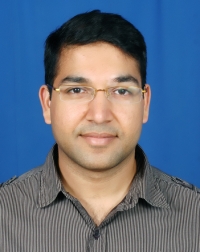 Dr. Ali Imran is founding director of AI4Networks Research Centre (www.ai4networks.com) at the University of Oklahoma. AI4networks is the first academic centre in the world exclusively created for research on zero touch deep network automation. The centre is host to TurboRAN (http://bsonlab.com/TurboRAN/ )-a purpose- built cellular testbed for enabling experimental research on zero touch automation–and numerous multinational R&D projects on AI for wireless networks. Dr. Imran is also co-founder of a start-up AISON (www.aison.co ) that has launched world’s first deep AI enabled RAN automation and performance optimization solution currently being evaluated by several operators around the world for its game changing gains over current SON paradigm. Dr Imran’s research on network automation has played pioneering role in this area and has been supported by over $4M in nationally and internationally competitive research grants. On this topic, he has published over 100 refereed journal and conference papers and has several patents granted and pending. His work includes some of the most influential publications in the area of mobile network automation. The impact of his work on network automation has been recognized by several prestigious awards such as VPR Outstanding International Impact Award at the University of Oklahoma, 2018, IEEE Green ICT YP International award 2017, and best paper award IEEE CAMAD 2013. In 2019 he has been named William H. Barkow Presidential Professor at the University of Oklahoma for his contributions to this field. Dr. Imran is routinely invited to serves as an advisor to key stakeholder in cellular network eco-system and as a speaker and a panellist on international industry fora and academic conferences on this topic. He is an Associate Fellow of Higher Education Academy (AFHEA), UK; president of ComSoc Tulsa Chapter; Senior Member IEEE, Member of Advisory Board for Special Technical Community on Big Data at IEEE Computer Society, and board member of ITERA. For more detailed bio of Dr. Imran see: www.ali-imran.org.
Dr. Ali Imran is founding director of AI4Networks Research Centre (www.ai4networks.com) at the University of Oklahoma. AI4networks is the first academic centre in the world exclusively created for research on zero touch deep network automation. The centre is host to TurboRAN (http://bsonlab.com/TurboRAN/ )-a purpose- built cellular testbed for enabling experimental research on zero touch automation–and numerous multinational R&D projects on AI for wireless networks. Dr. Imran is also co-founder of a start-up AISON (www.aison.co ) that has launched world’s first deep AI enabled RAN automation and performance optimization solution currently being evaluated by several operators around the world for its game changing gains over current SON paradigm. Dr Imran’s research on network automation has played pioneering role in this area and has been supported by over $4M in nationally and internationally competitive research grants. On this topic, he has published over 100 refereed journal and conference papers and has several patents granted and pending. His work includes some of the most influential publications in the area of mobile network automation. The impact of his work on network automation has been recognized by several prestigious awards such as VPR Outstanding International Impact Award at the University of Oklahoma, 2018, IEEE Green ICT YP International award 2017, and best paper award IEEE CAMAD 2013. In 2019 he has been named William H. Barkow Presidential Professor at the University of Oklahoma for his contributions to this field. Dr. Imran is routinely invited to serves as an advisor to key stakeholder in cellular network eco-system and as a speaker and a panellist on international industry fora and academic conferences on this topic. He is an Associate Fellow of Higher Education Academy (AFHEA), UK; president of ComSoc Tulsa Chapter; Senior Member IEEE, Member of Advisory Board for Special Technical Community on Big Data at IEEE Computer Society, and board member of ITERA. For more detailed bio of Dr. Imran see: www.ali-imran.org.
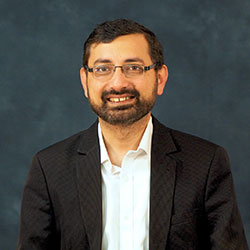 Dr. Muhammad Imran received his M.Sc. (Distinction) and Ph.D. degrees from Imperial College London, UK, in 2002 and 2007, respectively. He is currently a Chair Professor at the University of Glasgow and visiting Professor at 5GIC Surrey. He is the founding director of the Communications Sensing and Imaging Research labs and a regular invited speaker on several 5G related talks, industrial panels and policy events for wireless communication technology. He has a global collaborative research network spanning both academia and key industrial players in the field of wireless communications. He has led a number of multimillion pounds international research projects encompassing the areas of Internet of Things (IoT), energy efficiency, fundamental performance limits, sensor networks and self-organizing cellular networks. He led the physical layer research for 5G innovation centre at Surrey (an outdoor cellular testbed developed at University of Surrey with a grant of above $50m). He has supervised 40+ successful Ph.D. graduates and published over 400 peer-reviewed research papers including more than 30 IEEE transactions. He is associate editor of IEEE Transactions on Communications, IEEE Access, IEEE Communications Letters and guest editor of several special issues in IEEE journals. He is a chair for several tracks in highly reputed international conferences and workshops including forthcoming IEEE ICC 2020 (co-chair for Next Generation Networking Symposium). He has been awarded IEEE Comsoc’s Fred Ellersick award 2014 and FEPS Learning and Teaching award 2014. He has also been shortlisted for Wharton-QS Stars Reimagine Education Awards 2014. He is a senior member of IEEE, Fellow of IET and a Senior Fellow of Higher Education Academy (SFHEA), UK.
Dr. Muhammad Imran received his M.Sc. (Distinction) and Ph.D. degrees from Imperial College London, UK, in 2002 and 2007, respectively. He is currently a Chair Professor at the University of Glasgow and visiting Professor at 5GIC Surrey. He is the founding director of the Communications Sensing and Imaging Research labs and a regular invited speaker on several 5G related talks, industrial panels and policy events for wireless communication technology. He has a global collaborative research network spanning both academia and key industrial players in the field of wireless communications. He has led a number of multimillion pounds international research projects encompassing the areas of Internet of Things (IoT), energy efficiency, fundamental performance limits, sensor networks and self-organizing cellular networks. He led the physical layer research for 5G innovation centre at Surrey (an outdoor cellular testbed developed at University of Surrey with a grant of above $50m). He has supervised 40+ successful Ph.D. graduates and published over 400 peer-reviewed research papers including more than 30 IEEE transactions. He is associate editor of IEEE Transactions on Communications, IEEE Access, IEEE Communications Letters and guest editor of several special issues in IEEE journals. He is a chair for several tracks in highly reputed international conferences and workshops including forthcoming IEEE ICC 2020 (co-chair for Next Generation Networking Symposium). He has been awarded IEEE Comsoc’s Fred Ellersick award 2014 and FEPS Learning and Teaching award 2014. He has also been shortlisted for Wharton-QS Stars Reimagine Education Awards 2014. He is a senior member of IEEE, Fellow of IET and a Senior Fellow of Higher Education Academy (SFHEA), UK.
TUT06 - B5G: A New Frontier for Non-Orthogonal Multiple Access
Room: 307A
Presenters: Zhiguo Ding (University of Manchester, United Kingdom (Great Britain))
Abstract: Non-orthogonal multiple access (NOMA) is an essential enabling technology for future wireless networks to meet the heterogeneous demands on low latency, high reliability, massive connectivity, improved fairness, and high throughput. The key idea behind NOMA is to serve multiple users in the same resource block, such as a time slot, subcarrier, or spreading code. The NOMA principle provides a general framework, where various recently proposed 5G multiple access techniques can be viewed as special cases. Recent demonstrations by industry show that the use of NOMA can significantly improve the spectral efficiency of mobile networks. Because of its superior performance, NOMA has been also recently included in 3GPP Releases 14 and 15 for downlink transmission, proposed to Release 16 for uplink transmission, and included into the next generation digital TV standard, e.g. ATSC (Advanced Television Systems Committee) 3.0. This tutorial is to provide an overview of the latest research results and innovations in NOMA technologies as well as their applications. Future research challenges regarding NOMA in B5G and beyond are also presented.
Biography
Zhiguo Ding (S’03-M’05) received his B.Eng in Electrical Engineering from the Beijing University of Posts and Telecommunications in 2000, and the Ph.D degree in Electrical Engineering from Imperial College London in 2005. From Jul. 2005 to Apr. 2018, he was working in Queen’s University Belfast, Imperial College, Newcastle University and Lancaster University. Since Apr. 2018, he has been with the University of Manchester as a Professor in Communications. From Oct. 2012 to Sept. 2018, he has also been an academic visitor in Princeton University.
Dr Ding’ research interests are B5G networks, game theory, cooperative and energy harvesting networks and statistical signal processing. He is serving as an Editor for IEEE Transactions on Communications, IEEE Transactions on Vehicular Technology, and Journal of Wireless Communications and Mobile Computing, and was an Editor for IEEE Wireless Communication Letters, IEEE Communication Letters from 2013 to 2016. He received the best paper award in IET ICWMC-2009 and IEEE WCSP-2014, the EU Marie Curie Fellowship 2012-2014, the Top IEEE TVT Editor 2017, IEEE Heinrich Hertz Award 2018, IEEE Jack Neubauer Memorial Award 2018.
TUT07 - UAV Communications in 5G and Beyond: Integration of Sensing, Control, and Learning
Room: 317C
Presenters: Lingyang Song (Peking University, China), Zhu Han (University of Houston, USA), Hongliang Zhang (University of Houston, USA)
Abstract: The emerging unmanned aerial vehicles (UAVs) have been playing an increasing role in the military, public, and civil applications. Very recently, 3GPP has approved the study item on enhanced support to seamlessly integrate UAVs into future cellular networks. Unlike terrestrial cellular networks, UAV communications have many distinctive features such as high dynamic network topologies and weakly connected communication links. In addition, they still suffer from some practical constraints such as battery power, no-fly zone, etc. As such, many standards, protocols, and design methodologies used in terrestrial wireless networks are not directly applicable to airborne communication networks. Therefore, it is essential to develop new communication, signal processing, and optimization techniques in support of the ultra-reliable and real-time sensing applications, but enabling high data-rate transmissions to assist the terrestrial communications in LTE. Typically, to integrate UAVs into cellular networks, one needs to consider two main scenarios of UAV applications as follows.
First, dedicated UAVs, also called drones, can be used as communication platforms in the way as wireless access points or relays nodes, to further assist the terrestrial communications. This type of applications can be referred to as UAV Assisted Cellular Communications. UAV-assisted cellular communications have numerous use cases, including traffic offloading, wireless backhauling, swift service recovery after natural disasters, emergency response, rescue and search, information dissemination/broadcasting, and data collection from ground sensors for machine-type communications. However, different from traditional cellular networks, how to plan the time-variant placements of the UAVs served as base station (BS)/relay is very challenging due to the complicated 3D propagation environments as well as many other practical constraints such as power and flying speed. In addition, spectrum sharing with existing cellular networks is another interesting topic to investigate.
Second type of application is to exploit UAVs for sensing purposes due to its advantages of on-demand flexible deployment, larger service coverage compared with the conventional fixed sensor nodes, and ability to hover. Specially, UAVs, equipped with cameras or sensors, have come into our daily lives to execute critical real-time sensing tasks, such as smart agriculture, security monitoring, forest fire detection, and traffic surveillance. Due to the limited computation capability of UAVs, the real-time sensory data needs to be transmitted to the BS for real-time data processing. In this regard, the cellular networks are necessarily committed to support the data transmission for UAVs, which we refer to as Cellular assisted UAV Sensing. Nevertheless, to support real-time sensing streaming, it is desirable to design joint sensing and communication protocols, develop novel beamforming and estimation algorithms, and study efficient distributed resource optimization methods.
The aim of this tutorial is to bring together control, signal processing engineers, computer and information scientists, applied mathematicians and statisticians, as well as systems engineers to carve out the role that analytical and experimental engineering has to play in UAV research and development. This proposal will emphasize on UAV technologies and applications for cellular networks. There are four main objectives. The first objective is to provide an introduction to the UAV paradigm, from 5G and beyond communication perspective. The second objective is to introduce the key methods, including optimization, game, and graph theory, for UAV applications, in a comprehensive way. The third objective is to discuss UAV assisted cellular communications. The fourth objective is to present the state-of-the-art for cellular network assisted UAV sensing. Many examples will be illustrated in details so as to provide wide scope for general audiences.
Biography
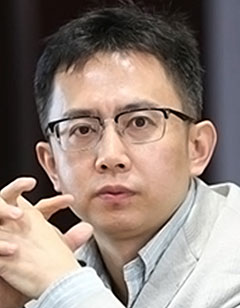 Lingyang Song received his PhD from the University of York, UK, in 2007, where he received the K. M. Stott Prize for excellent research. He worked as a postdoctoral research fellow at the University of Oslo, Norway, and Harvard University, until rejoining Philips Research UK in March 2008. In May 2009, he joined the School of Electronics Engineering and Computer Science, Peking University, China, as a full professor. His main research interests include cooperative and cognitive communications, physical layer security, and wireless ad hoc/sensor networks. He published extensively, wrote 6 text books, and is co-inventor of a number of patents (standard contributions). He received 9 paper awards in IEEE journal and conferences including IEEE JSAC 2016, IEEE WCNC 2012, ICC 2014, Globecom 2014, ICC 2015, etc. He is currently on the Editorial Board of IEEE Transactions on Wireless Communications and Journal of Network and Computer Applications. He served as the TPC co-chairs for the International Conference on Ubiquitous and Future Networks (ICUFN2011/2012), symposium co-chairs in the International Wireless Communications and Mobile Computing Conference (IWCMC 2009/2010), IEEE International Conference on Communication Technology (ICCT2011), and IEEE International Conference on Communications (ICC 2014, 2015). He is the recipient of 2012 IEEE Asia Pacific (AP) Young Researcher Award. Dr. Song is a senior member of IEEE, and IEEE ComSoc distinguished lecturer since 2015.
Lingyang Song received his PhD from the University of York, UK, in 2007, where he received the K. M. Stott Prize for excellent research. He worked as a postdoctoral research fellow at the University of Oslo, Norway, and Harvard University, until rejoining Philips Research UK in March 2008. In May 2009, he joined the School of Electronics Engineering and Computer Science, Peking University, China, as a full professor. His main research interests include cooperative and cognitive communications, physical layer security, and wireless ad hoc/sensor networks. He published extensively, wrote 6 text books, and is co-inventor of a number of patents (standard contributions). He received 9 paper awards in IEEE journal and conferences including IEEE JSAC 2016, IEEE WCNC 2012, ICC 2014, Globecom 2014, ICC 2015, etc. He is currently on the Editorial Board of IEEE Transactions on Wireless Communications and Journal of Network and Computer Applications. He served as the TPC co-chairs for the International Conference on Ubiquitous and Future Networks (ICUFN2011/2012), symposium co-chairs in the International Wireless Communications and Mobile Computing Conference (IWCMC 2009/2010), IEEE International Conference on Communication Technology (ICCT2011), and IEEE International Conference on Communications (ICC 2014, 2015). He is the recipient of 2012 IEEE Asia Pacific (AP) Young Researcher Award. Dr. Song is a senior member of IEEE, and IEEE ComSoc distinguished lecturer since 2015.
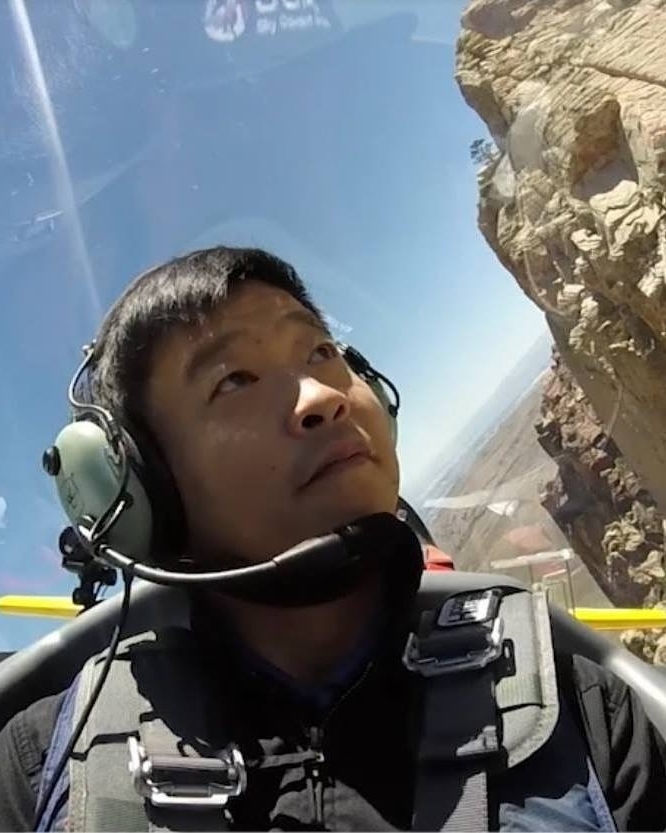 Zhu Han (S’01–M’04-SM’09-F’14) received the B.S. degree in electronic engineering from Tsinghua University, in 1997, and the M.S. and Ph.D. degrees in electrical engineering from the University of Maryland, College Park, in 1999 and 2003, respectively. From 2000 to 2002, he was an R&D Engineer of JDSU, Germantown, Maryland. From 2003 to 2006, he was a Research Associate at the University of Maryland. From 2006 to 2008, he was an assistant professor in Boise State University, Idaho. Currently, he is a Professor in Electrical and Computer Engineering Department as well as Computer Science Department at the University of Houston, Texas. His research interests include wireless resource allocation and management, wireless communications and networking, game theory, wireless multimedia, security, and smart grid communication. Dr. Han received an NSF Career Award in 2010, the Fred W. Ellersick Prize of the IEEE Communication Society in 2011, the EURASIP Best Paper Award for the Journal on Advances in Signal Processing in 2015, several best paper awards in IEEE conferences, and is currently an IEEE Communications Society Distinguished Lecturer. Dr. Han is top 1% highly cited researcher according to Web of Science 2017.
Zhu Han (S’01–M’04-SM’09-F’14) received the B.S. degree in electronic engineering from Tsinghua University, in 1997, and the M.S. and Ph.D. degrees in electrical engineering from the University of Maryland, College Park, in 1999 and 2003, respectively. From 2000 to 2002, he was an R&D Engineer of JDSU, Germantown, Maryland. From 2003 to 2006, he was a Research Associate at the University of Maryland. From 2006 to 2008, he was an assistant professor in Boise State University, Idaho. Currently, he is a Professor in Electrical and Computer Engineering Department as well as Computer Science Department at the University of Houston, Texas. His research interests include wireless resource allocation and management, wireless communications and networking, game theory, wireless multimedia, security, and smart grid communication. Dr. Han received an NSF Career Award in 2010, the Fred W. Ellersick Prize of the IEEE Communication Society in 2011, the EURASIP Best Paper Award for the Journal on Advances in Signal Processing in 2015, several best paper awards in IEEE conferences, and is currently an IEEE Communications Society Distinguished Lecturer. Dr. Han is top 1% highly cited researcher according to Web of Science 2017.
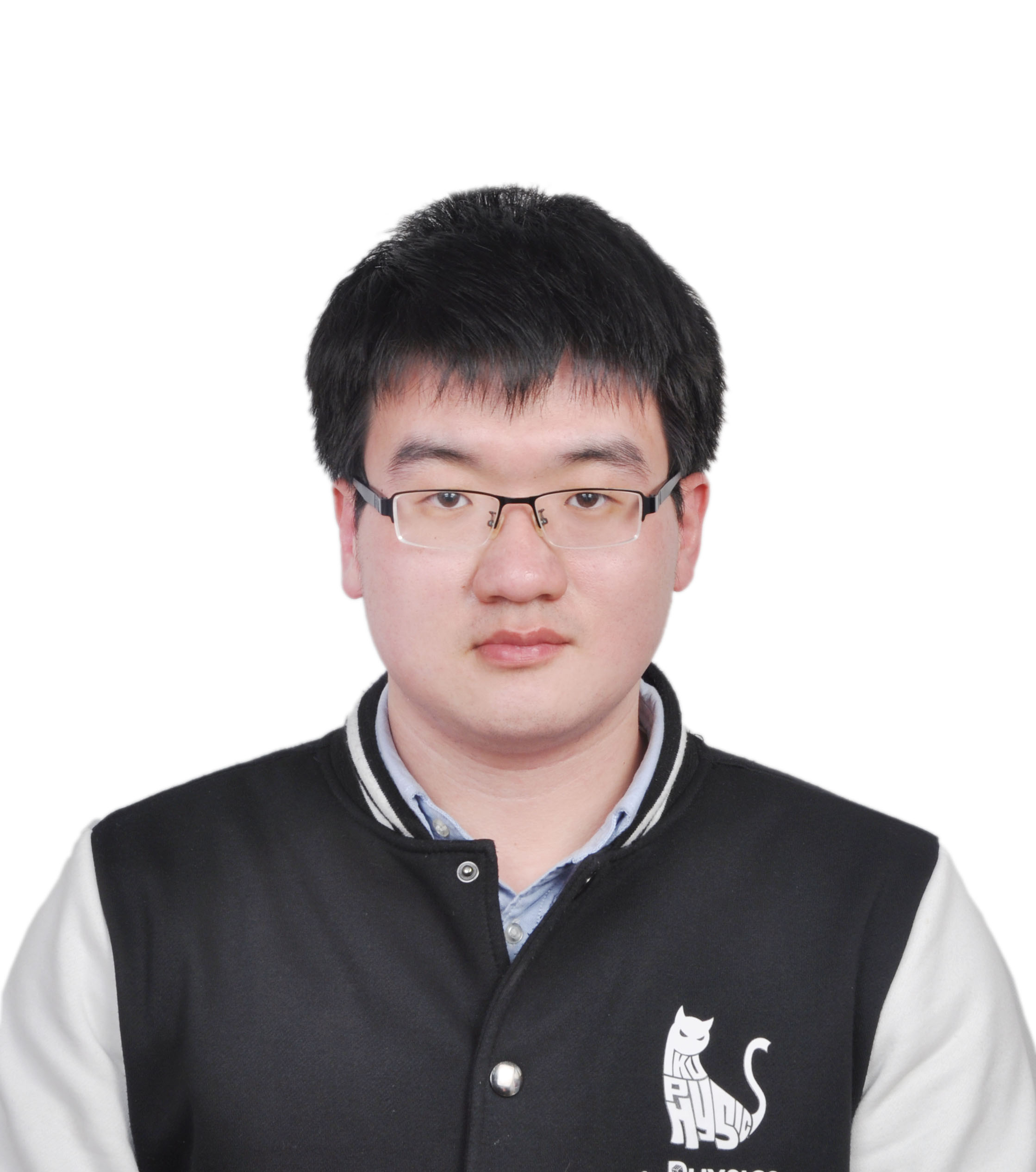 Hongliang Zhang (S’15-M’19) received the B.S. and Ph.D. degrees at the School of Electrical Engineering and Computer Science at Peking University, in 2014 and 2019, respectively. Currently, he is a Postdoctoral Fellow in the Electrical and Computer Engineering Department as well as the Computer Science Department at the University of Houston, Texas. His current research interest includes cooperative communications, Internet-of-Things networks, hypergraph theory, and optimization theory. He has served as a TPC Member for many IEEE conferences, such as Globecom, ICC, and WCNC. He is currently an Editor for IET Communications. He also serves as a Guest Editor for IEEE IoT-J special issue on Internet of UAVs over Cellular Networks.
Hongliang Zhang (S’15-M’19) received the B.S. and Ph.D. degrees at the School of Electrical Engineering and Computer Science at Peking University, in 2014 and 2019, respectively. Currently, he is a Postdoctoral Fellow in the Electrical and Computer Engineering Department as well as the Computer Science Department at the University of Houston, Texas. His current research interest includes cooperative communications, Internet-of-Things networks, hypergraph theory, and optimization theory. He has served as a TPC Member for many IEEE conferences, such as Globecom, ICC, and WCNC. He is currently an Editor for IET Communications. He also serves as a Guest Editor for IEEE IoT-J special issue on Internet of UAVs over Cellular Networks.
TUT08 - Orthogonal Time Frequency Space (OTFS) Modulation and Applications
Room: 308A
Presenters: Emanuele Viterbo and Yi Hong (Monash University, Australia)
Abstract: Emerging mass transportation systems – such as self-driving cars, high-speed trains, drones, flying cars, and supersonic flight – will challenge the design of future wireless networks due to high-mobility environments: a large number of high-mobility users require high data rates and low latencies. The physical layer modulation technique is a key design component to meet the system requirements of high mobility. Currently, orthogonal frequency division multiplexing (OFDM) is the modulation scheme deployed in 4G long term evolution (LTE) mobile systems, where the wireless channel typically exhibits time-varying multipath fading. OFDM can only achieve a near-capacity performance over a doubly dispersive channel with a low Doppler effect, but suffers heavy degradations under high Doppler conditions, typically found in high-mobility environments. Orthogonal time frequency space (OTFS) modulation has been recently proposed by Hadani et al. at WCNC’17, San Francisco. It was shown to provide significant advantages over OFDM in doubly dispersive channels. OTFS multiplexes each information symbol over a 2D orthogonal basis functions, specifically designed to combat the dynamics of the time-varying multipath channels. As a result, all information symbols experience a constant flat fading equivalent channel. OTFS is only in its infancy, leaving many opportunities for significant developments on both practical and theoretical fronts.
Biography
Emanuele Viterbo (F’2011) received his degree (Laurea) in Electrical Engineering in 1989 and his Ph.D. in 1995 in Electrical Engineering, both from the Politecnico di Torino, Torino, Italy. From 1990 to 1992 he was with the European Patent Office, The Hague, The Netherlands, as a patent examiner in the field of dynamic recording and error-control coding. Between 1995 and 1997 he held a post-doctoral position in the Dipartimento di Elettronica of the Politecnico di Torino. In 1997-98 he was a post-doctoral research fellow in the Information Sciences Research Center of AT&T Research, Florham Park, NJ, USA. He became first Assistant Professor (1998) then Associate Professor (2005) in Dipartimento di Elettronica at Politecnico di Torino. In 2006 he became Full Professor in DEIS at University of Calabria, Italy. From September 2010 he is Professor in the ECSE Department and Associate Dean Graduate Research of the Faculty of Engineering at Monash University, Melbourne, Australia. Emanuele Viterbo is a 2011 Fellow of the IEEE, an ISI Highly Cited Researcher and Member of the Board of Governors of the IEEE Information Theory Society (2011-2013 and 2014-2018). He served as Associate Editor of IEEE Transactions on Information Theory, European Transactions on Telecommunications and Journal of Communications and Networks. His main research interests are in lattice codes for the Gaussian and fading channels, algebraic coding theory, algebraic space-time coding, digital terrestrial television broadcasting, and digital magnetic recording.
Yi Hong (S’00–M’05–SM’10) is currently a Senior lecturer at the Department of Electrical and Com- puter Systems Eng., Monash University, Melbourne, Australia. She obtained her Ph.D. degree in Electrical Engineering and Telecommunications from the University of New South Wales (UNSW), Sydney, and received the NICTA-ACoRN Earlier Career Researcher Award at the Australian Communication Theory Workshop, Adelaide, Australia, 2007. Dr. Hong was an Associate Editor for IEEE Wireless Communication Letters and Transactions on Emerging Telecommunications Technologies (ETT). She was the General Co- Chair of IEEE Information Theory Workshop 2014, Hobart; the Technical Program Committee Chair of Australian Communications Theory Workshop 2011, Melbourne; and the Publicity Chair at the IEEE Information Theory Workshop 2009, Sicily. She was a Technical Program Committee member for many IEEE leading conferences. Her research interests include communication theory, coding and information theory with applications to telecommunication engineering.
TUT09 - URLLC for 5G and Beyond: Physical, MAC and Network Design and Solutions
Room: 318A
Presenters: Branka Vucetic, Yonghui Li and Mahyar Shirvanimoghaddam (University of Sydney, Australia), Rana Abbas (The University of Sydney, Australia), Changyang She (University of Sydney, Australia)
Abstract: The world is currently witnessing the rise of many mission critical applications such as tele-surgery, intelligent transportation, industry automation, virtual reality and augmented reality, vehicular communications, etc. Some of these applications will be enabled by the fifth-generation of cellular networks (5G), which will provide the required ultra-reliable low-latency communication (URLLC). However, guaranteeing these stringent reliability and end-to-end latency requirements continues to prove to be quite challenging, due to the significant shift in paradigms required in both theoretical fundamentals of wireless communications as well as design principles. In this tutorial, we cover the challenges and potential solutions for 5G and beyond 5G to support URLLC, in terms of error control coding improving reliability, channel access protocols for reducing latency, and multi-connectivity for improving network availability.
Biography
Branka Vucetic [F] is an ARC Laureate Fellow and Professor of Telecommunications, Director of the Centre of Excellence in Telecommunications at the University of Sydney. During her career, she has held research and academic positions in Yugoslavia, Australia, UK and China. Her research interests include coding, communication theory and signal processing and their applications in wireless networks and industrial internet of things. Prof Vucetic co-authored four books and more than four hundred papers in telecommunications journals and conference proceedings. She is a Fellow of the Australian Academy of Technological Sciences and Engineering and a Fellow of the IEEE.
Yonghui Li [F] received his PhD degree in November 2002 from Beijing University of Aeronautics and Astronautics. Since 2003, he has been with the Centre of Excellence in Telecommunications, the University of Sydney, Australia. He is now a Professor in School of Electrical and Information Engineering, University of Sydney. He is the recipient of the Australian Queen Elizabeth II Fellowship in 2008 and the Australian Future Fellowship in 2012. His current research interests are in the area of wireless communications, with a particular focus on MIMO, millimeter wave communications, machine to machine communications, coding techniques and cooperative communications. He has received three IEEE best paper awards. He is a Fellow of IEEE.
Mahyar Shirvanimoghaddam [M] received the B.Sc. degree (1st Class Honours) from the University of Tehran, Iran, in September 2008, the M.Sc. degree (1st Class Honours) from Sharif University of Technology, Iran, in October 2010, and the Ph.D. degree from The University of Sydney, Australia, in January 2015, all in electrical engineering. He then held a postdoctoral research position at the School of Electrical Engineering and Computing at the University of Newcastle, Australia. He is currently an Academic Fellow at the School of Electrical and Information Engineering, The University of Sydney, Australia. His general research interests include channel coding techniques, multiple access techniques, and machine-to-machine Communications.
Rana Abbas [M] received the M.E. in 2013 and the Ph.D. degree in 2018, both in electrical engineering from The University of Sydney. She is currently a researcher at the Centre of IoT and Telecommunications, at The University of Sydney. Her research interests include channel coding, random access, machine type communications and IIoT. She is the recipient of the Australian Postgraduate Awards Scholarship and the Norman 1 Price scholarship from the Centre of Excellence in Telecommunications, School of Electrical and Information Engineering, The University of Sydney. She is also the winner of the Best Paper Award at the IEEE PIMRC, 2018.
Changyang She [M] received his B. Eng and Ph.D. degrees in Electronics and Information Engineering from Beihang University, Beijing, China in 2012 and 2017, respectively. He was a postdoctoral research fellow with Singapore University of Technology and Design. He is now a postdoctoral research Associate with the University of Sydney. His research interests lie in the areas of ultra-reliable and low- latency communications, tactile internet, big data for resource allocation in wireless networks and energy efficient transmission in 5G systems. He has given three tutorials on ultra-reliable and low- latency communications in IEEE/CIC International Conference on Communications in China (ICCC) 2017, IEEE Vehicular Technology Conference (VTC) Fall 2018, and IEEE Personal, Indoor and Mobile Radio Communications (PIMRC) 2018.
TUT10- NOMA-Based Random Access for Massive MTC in 5G
Room: 318B
Presenters: Jinho Choi (Deakin University, Australia)
Abstract: Machine-type communication (MTC) becomes a key element for the Inter- net of Things (IoT) as it enables to support massive IoT connectivity in 5th generation (5G) and future wireless systems. Due to the sparse device activity, uncoordinated transmission schemes (e.g., random access) are considered for most existing MTC schemes in standards. In general, since the performance of MTC is limited by the system bandwidth, a wide system bandwidth is required to support a large number of MTC/IoT devices. To increase the number of MTC/IoT devices with a given system bandwidth, non-orthogonal multiple access (NOMA), which has been extensively studied to improve the spectral efficiency for conventional or human-type communication (HTC), can be applied to MTC. In this tutorial, we demonstrate how the notion of NOMA can be applied to MTC in 5G in order to support a large number of IoT devices. To this end, we present various NOMA-based random access schemes for MTC and explain how they can be designed and analyzed.
Biography
Jinho Choi was born in Seoul, Korea. He received B.E. (magna cum laude) degree in electronics engineering in 1989 from Sogang University, Seoul, and M.S.E. and Ph.D. degrees in electrical engineering from Korea Advanced Institute of Science and Technology (KAIST) in 1991 and 1994, respectively. He is with the School of Information Technology, Deakin University, Burwood, VIC 3125, Australia, as a Professor. Prior to joining Deakin in 2018, he was with Swansea University, United Kingdom, as a Professor/Chair in Wireless, and Gwangju Institute of Science and Technology (GIST), Korea, as a Professor. His research interests include the Internet of Things (IoT), wireless communications, and statistical signal processing. He authored two books published by Cambridge University Press in 2006 and 2010. Prof. Choi received the 1999 Best Paper Award for Signal Processing from EURASIP, 2009 Best Paper Award from WPMC (Conference), and is Senior Member of IEEE. Currently, he is an Editor of IEEE Trans. Communications and IEEE Wireless Communications Letters and had served as an Associate Editor or Editor of other journals including IEEE Communications Letters, Journal of Communications and Networks (JCN), IEEE Trans. Vehicular Technology, and ETRI journal.




